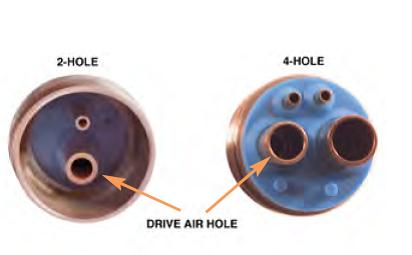Low Speed Handpieces 101
What is a Low (Slow) Speed Handpiece?
- A hand held motor, usually air-driven (can also be electric), that spins a cutting bur or prophy cup at 50,000 RPM or less.
- Used for removal of caries, refining a cavity preparation, performing prophylaxis, and other endodontic and implant procedures.
- Straight attachments that use handpiece burs are generally used for trimming prosthetics.

How Does a Low Speed Handpiece Work?
- An airline is attached to the back end of the handpiece, similar to a high speed handpiece.
- When air is introduced into the handpiece (via the chair unit foot pedal), air is forced over the vanes of the rotor (consisting of vanes or blades), which causes it to spin.
- After the air moves around the rotor, it is forced out through the handpiece’s back end exhaust port.
Features and Functions
How Fast Does a Low Speed Handpiece Run?
- The speed depends upon the pressure (PSI) of the air supply, the configuration of the rotor components, and the gears inside the motor.
- Low speed handpieces are designed to handle much more air pressure than high speed handpieces.
- Typical low speed motors, without gear reductions, running at 40 PSI should spin at approximately 20,000 rpm.
- Speed reducing gears allow the handpiece to generate significantly more torque.
- Hygienist handpieces and low speeds used for prophylaxis generally operate at 5,000 RPM.
- Endodontic and implant procedures use attachments to reduce the speed to 1,500 rpm or less and generate very high levels of torque for optimal control.
How Long Will a Low Speed Handpiece Last?
- Slow speed handpieces can have long life spans due to the low operating speeds and design differences (compared with high speed handpieces.)
- The handpieces can be repeatedly overhauled but should have professional maintenance conducted every 6-12 months.
What Type of Handpiece Connections and Tubing Compatibility Does a Low Speed Handpiece Have?
- Similar to high speed handpieces, low speed handpieces can be either fixed back or quick disconnect style, with 2 different tubing configurations: 2 hole and 4 hole.
- Because low speed handpieces operate at significantly lower speeds than high speed handpieces, there is less need for cooling the tooth with air and water spray.
- Therefore, most low speed motors are configured so that no water is transferred through the water tubes; however, low speed handpieces still maintain the international standard backends that high speed handpieces have, for the sake of compatibility with tubing.








